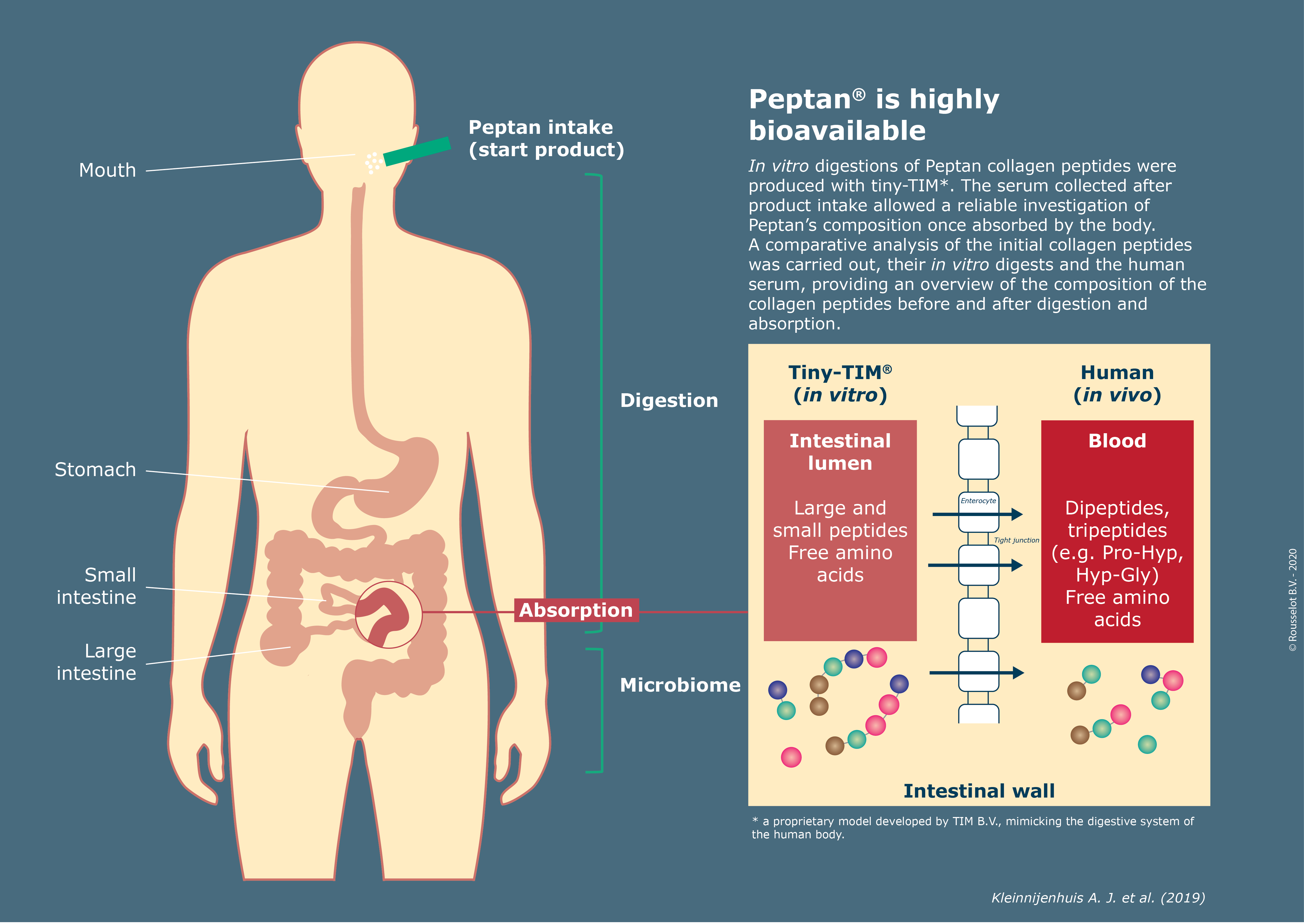Rousselot, a Darling Ingredients brand and supplier of collagen-based solutions, has announced the publication of a study investigating the transformation that different types of collagen peptides undergo during digestion and absorption.
Performed in collaboration with renowned research institutes that are long-term collaborators, the study used a new analytical approach. Confirming the findings of previous studies on bioavailability, the paper provides a useful snapshot of the changes the tested collagen peptides undergo during the course of digestion and absorption.
Collagen peptides have been shown to provide multiple benefits supporting skin, bone, sports recovery and joint health. However, to fully understand the cellular mechanisms responsible for those effects, it’s important to map out the significant modifications that collagen peptides undergo when they pass the human digestion and are taken up by the body.
Combining preclinical and clinical approaches, the study aimed to mimic the process of human digestion and absorption on four different types of collagen peptides. Provided by Rousselot, the initial products were of different animal sources and varying molecular weight.
Contributors
In vitro digestions of the four collagen hydrolysates were performed with the model system tiny-TIM (proprietary to TIM BV – The TIM Company, the Netherlands), a state-of-the-art technology mimicking the chemical, kinetic and dynamic conditions of human digestion.
The technology enables identification of nutrient fractions that are available for absorption in the small intestine, providing valuable information on the bioavailability of collagen peptides.
The technology mimicks the chemical, kinetic and dynamic conditions of human digestion
INRAe (French National Institute for Agricultural, Environment and Food Research) performed a clinical test with 12 human volunteers who ingested 25 g of collagen peptides. The serum collected after product intake allowed a reliable investigation of Peptan’s composition once absorbed by the body.
Triskelion contributed to the research carrying out a comparative analysis of the initial collagen peptides, their in vitro digests and the human serum, providing an overview of the composition of the collagen peptides before and after digestion and absorption.
Findings
Minimal differences between digested collagen peptides: Results showed that the tested collagen peptides underwent significant change during digestion and absorption. The average molecular weight decreased as the products were exposed to digestion enzymes and broken into smaller peptides. It was detected that the products of different animal sources become more similar when the average molecular weight drops along the digestion and the absorption process.
Confirmation of Peptan’s high bioavailability: The human serum analysis revealed the presence of bioactive hydroxyproline-carrying dipeptides in the blood after Peptan ingestion. These dipeptides (Hydroxyproline-Glycine and Proline-Hydroxyproline) significantly contributed to the total increase of hydroxyproline, the characteristic amino acid of collagen, in the blood.

Janne Prawitt, Scientific Director Health and Nutrition at Rousselot said: "This study takes a pioneering approach to capture the changes that Peptan undergoes while passing through our digestive tract and being absorbed into the bloodstream."
Anne Kleinnijenhuis, Senior scientist analytical research at Triskelion said: "The value of this study lies in the findings on the changing composition of the collagen hydrolysates. Such highly dynamic and complex products required the design of a novel (data) analytical workflow, which enabled us to compare different types of samples and obtain layered information. The insight gained with this approach was crucial for defining a suitable targeted setup. It’s extremely rewarding to lead the way with new scientific methods and to work with high profile partners."
The study has been published online in the peer-reviewed journal “Analytical and Bioanalytical Chemistry”.
